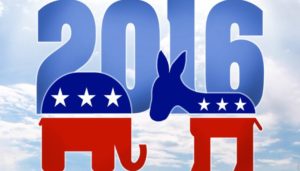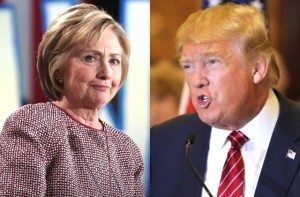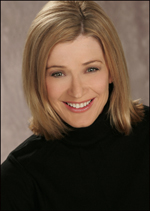2016 Presidential Debates: Talent Performance History in the Making
 The debates between Hillary Clinton and Donald Trump promise to draw a Super Bowl-sized audience. No doubt the candidates will get plenty of coaching to prepare for moments that could make or break a presidential campaign. Here’s a little free advice.
The debates between Hillary Clinton and Donald Trump promise to draw a Super Bowl-sized audience. No doubt the candidates will get plenty of coaching to prepare for moments that could make or break a presidential campaign. Here’s a little free advice.
The First Seven Seconds
Among those said to be advising Trump is former Fox News Channel mogul Roger Ailes. His book, “You are the Message,” points out the importance of the first seven seconds. An audience is likely to form an impression of a speaker before he or she has a chance to say anything.
Actually, Clinton will make history in the very first second. No woman has ever taken the stage as a major party nominee in a US presidential debate. If elected, Trump at 70 would be the oldest person to take the oath of office; Clinton is only slightly younger and has faced questions about her health and stamina. Advantage goes to the candidate who projects the most energy and eagerness to take on the job of leader of the free world, both initially and throughout the performance. Barack Obama’s low energy in his first 2012 debate with Mitt Romney contributed to a weak showing. Clinton’s late return to the stage in a 2015 Democratic primary debate created a distraction from her message. Trump needs to prepare for a reversal of his usual role on “The Apprentice” reality show; instead of sitting back and judging who should be fired, he will need to show his willingness to compete for the job.
Appearance Matters
The goal for both candidates is to make appearance a non-issue. Bet on Trump to wear the uniform of male credibility: dark suit, white shirt and power tie. The only real question is what solid, bold color the tie will be. As for his hair, Trump will be Trump.
Clinton has become famous for her power pantsuits in solid, bold colors. The only issue should be whether she will choose a bright bold color, or a darker solid like gray or navy. But she occasionally detours to questionable choices like drab brown or gray tweeds, an orange hue that could be compared to a prison jumpsuit, or a textured jacket with an Armani price tag. All black or all white can be unflattering on TV. A “safe” choice — solid bold color, flattering neckline, minimal jewelry — would be less likely to distract from her message. She has changed hairstyles frequently over the years but her current ‘do accomplishes the goal of effectively framing her face.
Let’s admit upfront that this is a much trickier area for a female candidate. VP candidate Sarah Palin took flak for her $150.000 wardrobe makeover in 2008, but no one blinks when the men of both parties show up in pricey custom suits costing thousands of dollars.

Clinton should choose a solid color and avoid distracting patterns. Trump will likely stick to traditional business attire with a power tie.
Body Language and Tone
In my book “Power Performance” I cite UCLA Research showing how audiences form an impression of a speaker using verbal, vocal and visual cues. Body language accounts for up to 55 percent of how a speaker is perceived, with vocal characteristics making up 38 percent and the verbal component only 5 percent. While these studies have their limitations, the bottom line for an on-camera performer is that if there is a conflict between your body language and your words, the audience will tend to believe your body language. Both candidates should strive for open body language and natural gestures.
Body direction is an extremely powerful tool in a debate, accounting for memorable moments such as the 1988 vice presidential debate when Democrat Lloyd Bentsen squared his shoulders toward Republican Dan Quayle and declared, “Senator, you’re no Jack Kennedy.” It mattered that Bentsen looked Quayle directly in the eye. This weapon should be used sparingly, however, because the real audience for a TV debate is the people watching at home. While it’s a chance for a dramatic winning point, there is also risk for both 2016 candidates in directly addressing each other: Clinton might come across as strident and scolding, while Trump might appear to be a rude bully.
For Trump, an even bigger potential pitfall would be doing battle with debate moderators. Trump lost ground when he tangled with Fox News anchor Megan Kelly over her question on his attitude toward women. The journalists selected for the Clinton-Trump contests have reputations for being tough but fair, even when their news organizations have been accused of bias. Remember the 2015 CNBC debate where Republican primary field took umbrage at the “gotcha” questions? Given the current mainstream media mindset, “tough but fair” may translate into inviting Clinton to explain how her programs will help Americans while putting Trump on the defensive for his most extreme controversial statements. Trump should prepare not to stumble over a question on some extremely obscure foreign policy issue that Clinton will knock out of the park. Clinton, who went months without fielding pointed questions in a news conference, will have to maintain her poise if asked about her private email server, classified information, the Clinton Foundation and other topics that didn’t get much airtime in the Democratic primary debates. Looking annoyed at the question, or the person who asked it, won’t help her with voters who find her untrustworthy.
Both candidates, after months addressing crowds on the campaign trail, have a tendency to yell. It’s as if they think loudness will make their talking points more effective. The mass medium of television is weirdly intimate. In a TV debate they will be addressing millions of Americans one voter at a time. There is no need to shout into a microphone that is only about 10 inches away from your mouth. Plenty of voters have already made up their minds, to the point of changing channels to avoid hearing the candidate they dislike. The debates might be the last chance to turn down the noise and hear directly from both sides before Election Day. Regardless of the policy points the candidates make, the next commander in chief just might be the debater who comes across as the person you’d like to meet at the coffee shop — casual, comfortable, connected and credible. What they say may be far less important than how they say it.
(Image courtesy flickr.)
TV talent coach Terry Anzur is a former talk show host on America’s Talking (now MSNBC). As political editor of KCBS-TV she moderated several statewide debates in California, including one in which she caught Sen. Dianne Feinstein violating the rules by having notes written on her hand. She is available to be interviewed on any issues regarding debate performance by candidates or moderators.
Tweet





 Hi, I'm Terry Anzur. I've been a professional multimedia journalist for more than 30 years, anchoring and reporting everywhere from New York to Los Angeles to West Palm Beach. I've taught on-air skills to journalists of all levels, both through positions at the University of Southern California and Pepperdine University and through my own independent company.
Hi, I'm Terry Anzur. I've been a professional multimedia journalist for more than 30 years, anchoring and reporting everywhere from New York to Los Angeles to West Palm Beach. I've taught on-air skills to journalists of all levels, both through positions at the University of Southern California and Pepperdine University and through my own independent company.